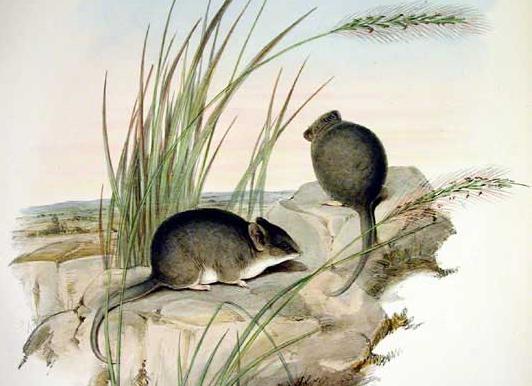What is the maximal age a Stripe-faced dunnart reaches?
An adult Stripe-faced dunnart (Sminthopsis macroura) usually gets as old as 4.83 years.
Stripe-faced dunnarts are around 11 days in the womb of their mother. When born, they weight 6 grams (0.01 lbs) and measure 4 cm (0′ 2″). As a member of the Dasyuridae family (genus: Sminthopsis), a Stripe-faced dunnart caries out around 7 little ones per pregnancy, which happens around 2 times a year. Fully grown, they reach a bodylength of 9.5 cm (0′ 4″).
As a reference: Usually, humans get as old as 100 years, with the average being around 75 years. After being carried in the belly of their mother for 280 days (40 weeks), they grow to an average size of 1.65m (5′ 5″) and weight in at 62 kg (137 lbs), which is obviously highly individual.

The striped-faced dunnart (Sminthopsis macroura) is a small, Australian, nocturnal, “marsupial mouse,” part of the family Dasyuridae. The species’ distribution occurs throughout much of inland central and northern Australia, occupying a range of arid and semi-arid habitats.While the species has a broad distribution range, it has been declining across much of Australia, including the western region of New South Wales (NSW). This is due to several threatening processes, primarily habitat degradation.This has led to the NSW Office of Environment and Heritage listing the species as ‘vulnerable’. The species is not listed on the Environment Protection and Biodiversity Conservation Act 1999 (EPBC Act). The International Union for Conservation of Nature (IUCN) Red List of Threatened Species list the species as of ‘least concern’.Recent genetic studies have discovered that this dunnart species is in fact three distinct species that over several million years diverged from each other. However, because they are difficult to distinguish, they tend to be treated as a single species.The three subspecies are as follows:Sminthopsis macroura macroura in central, eastern, and western AustraliaS.m. stalkeri in central northern AustraliaS.m. froggatti in the Kimberley region
Animals of the same family as a Stripe-faced dunnart
Not really brothers and sisters, but from the same biological family (Dasyuridae):
- Fawn antechinus becoming 2.25 years old
- Hairy-footed dunnart bringing the scale to 15 grams
- Ooldea dunnart becoming 3 years old
- Black-tailed dasyure with 3 babies per pregnancy
- Cinnamon antechinus becoming 2 years old
- Yellow-footed antechinus becoming 3.5 years old
- Crest-tailed mulgara becoming 7 years old
- Sandhill dunnart becoming 5 years old
- Kultarr becoming 3.25 years old
- Common planigale becoming 4 years old
Animals that reach the same age as Stripe-faced dunnart
With an average age of 4.83 years, Stripe-faced dunnart are in good companionship of the following animals:
- Hispid cotton rat usually reaching 5.17 years
- Wood mouse usually reaching 4.33 years
- Woolley’s false antechinus usually reaching 4 years
- Golden-rumped elephant shrew usually reaching 4 years
- European water vole usually reaching 5 years
- Fat-tailed dunnart usually reaching 4.25 years
- Lesser mole-rat usually reaching 4.5 years
- Central African oyan usually reaching 5.33 years
- Greater grison usually reaching 5.25 years
- Southern long-nosed bat usually reaching 5 years
Animals with the same number of babies Stripe-faced dunnart
The same number of babies at once (7) are born by:
- European hamster
- Lutrine opossum
- Pallas’s pika
- Stolička’s mountain vole
- Common planigale
- Linnaeus’s mouse opossum
- Washington ground squirrel
- Red-cheeked ground squirrel
- Northern red-sided opossum
- Fat-tailed dunnart
Weighting as much as Stripe-faced dunnart
A fully grown Stripe-faced dunnart reaches around 24 grams (0.05 lbs). So do these animals:
- Greater long-nosed bat with 24 grams
- Bibimys chacoensis with 28 grams
- Carpentarian dunnart with 25 grams
- Brukkaros pygmy rock mouse with 20 grams
- Lesser Angolan epauletted fruit bat with 25 grams
- Tilda’s yellow-shouldered bat with 24 grams
- Little desert pocket mouse with 23 grams
- Desert long-eared bat with 21 grams
- Arnhem sheath-tailed bat with 26 grams
- Monito del monte with 25 grams
